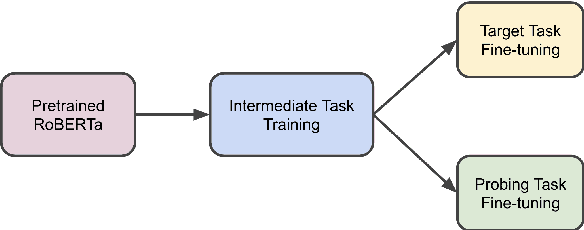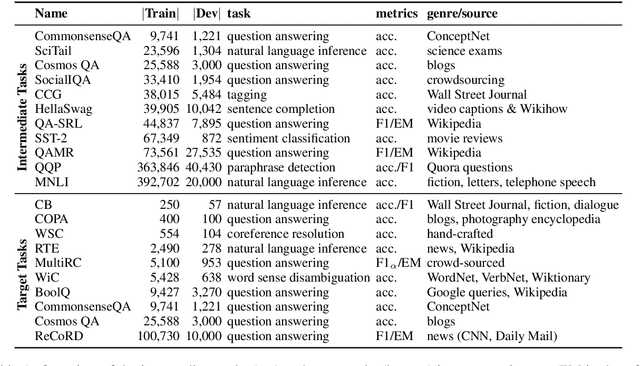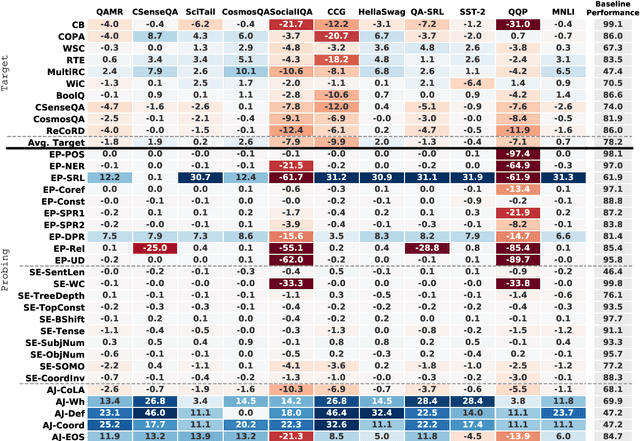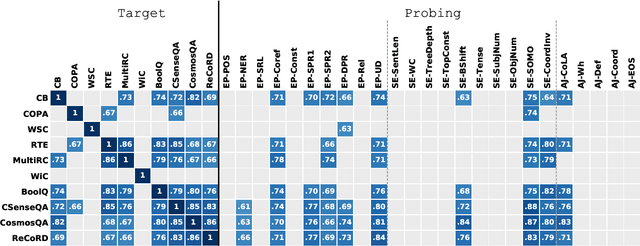Xiaoyi Zhang
Text Grouping Adapter: Adapting Pre-trained Text Detector for Layout Analysis
May 13, 2024



Abstract:Significant progress has been made in scene text detection models since the rise of deep learning, but scene text layout analysis, which aims to group detected text instances as paragraphs, has not kept pace. Previous works either treated text detection and grouping using separate models, or train a model from scratch while using a unified one. All of them have not yet made full use of the already well-trained text detectors and easily obtainable detection datasets. In this paper, we present Text Grouping Adapter (TGA), a module that can enable the utilization of various pre-trained text detectors to learn layout analysis, allowing us to adopt a well-trained text detector right off the shelf or just fine-tune it efficiently. Designed to be compatible with various text detector architectures, TGA takes detected text regions and image features as universal inputs to assemble text instance features. To capture broader contextual information for layout analysis, we propose to predict text group masks from text instance features by one-to-many assignment. Our comprehensive experiments demonstrate that, even with frozen pre-trained models, incorporating our TGA into various pre-trained text detectors and text spotters can achieve superior layout analysis performance, simultaneously inheriting generalized text detection ability from pre-training. In the case of full parameter fine-tuning, we can further improve layout analysis performance.
Talaria: Interactively Optimizing Machine Learning Models for Efficient Inference
Apr 03, 2024Abstract:On-device machine learning (ML) moves computation from the cloud to personal devices, protecting user privacy and enabling intelligent user experiences. However, fitting models on devices with limited resources presents a major technical challenge: practitioners need to optimize models and balance hardware metrics such as model size, latency, and power. To help practitioners create efficient ML models, we designed and developed Talaria: a model visualization and optimization system. Talaria enables practitioners to compile models to hardware, interactively visualize model statistics, and simulate optimizations to test the impact on inference metrics. Since its internal deployment two years ago, we have evaluated Talaria using three methodologies: (1) a log analysis highlighting its growth of 800+ practitioners submitting 3,600+ models; (2) a usability survey with 26 users assessing the utility of 20 Talaria features; and (3) a qualitative interview with the 7 most active users about their experience using Talaria.
GO-FEAP: Global Optimal UAV Planner Using Frontier-Omission-Aware Exploration and Altitude-Stratified Planning
Oct 24, 2023Abstract:Autonomous exploration is a fundamental problem for various applications of unmanned aerial vehicles(UAVs). Existing methods, however, are demonstrated to static local optima and two-dimensional exploration. To address these challenges, this paper introduces GO-FEAP (Global Optimal UAV Planner Using Frontier-Omission-Aware Exploration and Altitude-Stratified Planning), aiming to achieve efficient and complete three-dimensional exploration. Frontier-Omission-Aware Exploration module presented in this work takes into account multiple pivotal factors, encompassing frontier distance, nearby frontier count, frontier duration, and frontier categorization, for a comprehensive assessment of frontier importance. Furthermore, to tackle scenarios with substantial vertical variations, we introduce the Altitude-Stratified Planning strategy, which stratifies the three-dimensional space based on altitude, conducting global-local planning for each stratum. The objective of global planning is to identify the most optimal frontier for exploration, followed by viewpoint selection and local path optimization based on frontier type, ultimately generating dynamically feasible three-dimensional spatial exploration trajectories. We present extensive benchmark and real-world tests, in which our method completes the exploration tasks with unprecedented completeness compared to state-of-the-art approaches.
Reinforced UI Instruction Grounding: Towards a Generic UI Task Automation API
Oct 07, 2023Abstract:Recent popularity of Large Language Models (LLMs) has opened countless possibilities in automating numerous AI tasks by connecting LLMs to various domain-specific models or APIs, where LLMs serve as dispatchers while domain-specific models or APIs are action executors. Despite the vast numbers of domain-specific models/APIs, they still struggle to comprehensively cover super diverse automation demands in the interaction between human and User Interfaces (UIs). In this work, we build a multimodal model to ground natural language instructions in given UI screenshots as a generic UI task automation executor. This metadata-free grounding model, consisting of a visual encoder and a language decoder, is first pretrained on well studied document understanding tasks and then learns to decode spatial information from UI screenshots in a promptable way. To facilitate the exploitation of image-to-text pretrained knowledge, we follow the pixel-to-sequence paradigm to predict geometric coordinates in a sequence of tokens using a language decoder. We further propose an innovative Reinforcement Learning (RL) based algorithm to supervise the tokens in such sequence jointly with visually semantic metrics, which effectively strengthens the spatial decoding capability of the pixel-to-sequence paradigm. Extensive experiments demonstrate our proposed reinforced UI instruction grounding model outperforms the state-of-the-art methods by a clear margin and shows the potential as a generic UI task automation API.
Responsible Task Automation: Empowering Large Language Models as Responsible Task Automators
Jun 02, 2023Abstract:The recent success of Large Language Models (LLMs) signifies an impressive stride towards artificial general intelligence. They have shown a promising prospect in automatically completing tasks upon user instructions, functioning as brain-like coordinators. The associated risks will be revealed as we delegate an increasing number of tasks to machines for automated completion. A big question emerges: how can we make machines behave responsibly when helping humans automate tasks as personal copilots? In this paper, we explore this question in depth from the perspectives of feasibility, completeness and security. In specific, we present Responsible Task Automation (ResponsibleTA) as a fundamental framework to facilitate responsible collaboration between LLM-based coordinators and executors for task automation with three empowered capabilities: 1) predicting the feasibility of the commands for executors; 2) verifying the completeness of executors; 3) enhancing the security (e.g., the protection of users' privacy). We further propose and compare two paradigms for implementing the first two capabilities. One is to leverage the generic knowledge of LLMs themselves via prompt engineering while the other is to adopt domain-specific learnable models. Moreover, we introduce a local memory mechanism for achieving the third capability. We evaluate our proposed ResponsibleTA on UI task automation and hope it could bring more attentions to ensuring LLMs more responsible in diverse scenarios. The research project homepage is at https://task-automation-research.github.io/responsible_task_automation.
Unifying Layout Generation with a Decoupled Diffusion Model
Mar 09, 2023



Abstract:Layout generation aims to synthesize realistic graphic scenes consisting of elements with different attributes including category, size, position, and between-element relation. It is a crucial task for reducing the burden on heavy-duty graphic design works for formatted scenes, e.g., publications, documents, and user interfaces (UIs). Diverse application scenarios impose a big challenge in unifying various layout generation subtasks, including conditional and unconditional generation. In this paper, we propose a Layout Diffusion Generative Model (LDGM) to achieve such unification with a single decoupled diffusion model. LDGM views a layout of arbitrary missing or coarse element attributes as an intermediate diffusion status from a completed layout. Since different attributes have their individual semantics and characteristics, we propose to decouple the diffusion processes for them to improve the diversity of training samples and learn the reverse process jointly to exploit global-scope contexts for facilitating generation. As a result, our LDGM can generate layouts either from scratch or conditional on arbitrary available attributes. Extensive qualitative and quantitative experiments demonstrate our proposed LDGM outperforms existing layout generation models in both functionality and performance.
Understanding Mobile GUI: from Pixel-Words to Screen-Sentences
May 25, 2021



Abstract:The ubiquity of mobile phones makes mobile GUI understanding an important task. Most previous works in this domain require human-created metadata of screens (e.g. View Hierarchy) during inference, which unfortunately is often not available or reliable enough for GUI understanding. Inspired by the impressive success of Transformers in NLP tasks, targeting for purely vision-based GUI understanding, we extend the concepts of Words/Sentence to Pixel-Words/Screen-Sentence, and propose a mobile GUI understanding architecture: Pixel-Words to Screen-Sentence (PW2SS). In analogy to the individual Words, we define the Pixel-Words as atomic visual components (text and graphic components), which are visually consistent and semantically clear across screenshots of a large variety of design styles. The Pixel-Words extracted from a screenshot are aggregated into Screen-Sentence with a Screen Transformer proposed to model their relations. Since the Pixel-Words are defined as atomic visual components, the ambiguity between their visual appearance and semantics is dramatically reduced. We are able to make use of metadata available in training data to auto-generate high-quality annotations for Pixel-Words. A dataset, RICO-PW, of screenshots with Pixel-Words annotations is built based on the public RICO dataset, which will be released to help to address the lack of high-quality training data in this area. We train a detector to extract Pixel-Words from screenshots on this dataset and achieve metadata-free GUI understanding during inference. We conduct experiments and show that Pixel-Words can be well extracted on RICO-PW and well generalized to a new dataset, P2S-UI, collected by ourselves. The effectiveness of PW2SS is further verified in the GUI understanding tasks including relation prediction, clickability prediction, screen retrieval, and app type classification.
Intermediate-Task Transfer Learning with Pretrained Models for Natural Language Understanding: When and Why Does It Work?
May 09, 2020



Abstract:While pretrained models such as BERT have shown large gains across natural language understanding tasks, their performance can be improved by further training the model on a data-rich intermediate task, before fine-tuning it on a target task. However, it is still poorly understood when and why intermediate-task training is beneficial for a given target task. To investigate this, we perform a large-scale study on the pretrained RoBERTa model with 110 intermediate-target task combinations. We further evaluate all trained models with 25 probing tasks meant to reveal the specific skills that drive transfer. We observe that intermediate tasks requiring high-level inference and reasoning abilities tend to work best. We also observe that target task performance is strongly correlated with higher-level abilities such as coreference resolution. However, we fail to observe more granular correlations between probing and target task performance, highlighting the need for further work on broad-coverage probing benchmarks. We also observe evidence that the forgetting of knowledge learned during pretraining may limit our analysis, highlighting the need for further work on transfer learning methods in these settings.
Learning to Dehaze From Realistic Scene with A Fast Physics Based Dehazing Network
Apr 18, 2020



Abstract:Dehaze is one of the popular computer vision research topics for long. A realtime method with reliable performance is highly desired for a lot of applications such as autonomous driving. In recent years, while learning based methods require datasets containing pairs of hazy images and clean ground truth references, it is generally impossible to capture this kind of data in real. Many existing researches compromise this difficulty to generate hazy images by rendering the haze from depth on common RGBD datasets using the haze imaging model. However, there is still a gap between the synthetic datasets and real hazy images as large datasets with high quality depth are mostly indoor and depth maps for outdoor are imprecise. In this paper, we complement the exiting datasets with a new, large, and diverse dehazing dataset containing real outdoor scenes from HD 3D videos. We select large number of high quality frames of real outdoor scenes and render haze on them using depth from stereo. Our dataset is more realistic than existing ones and we demonstrate that using this dataset greatly improves the dehazing performance on real scenes. In addition to the dataset, inspired by the physics model, we also propose a light and reliable dehaze network. Our approach outperforms other methods by a large margin and becomes the new state-of-the-art method. Moreover, the light design of the network enables our methods to run at realtime speed that is much faster than other methods.
Tracing State-Level Obesity Prevalence from Sentence Embeddings of Tweets: A Feasibility Study
Dec 02, 2019



Abstract:Twitter data has been shown broadly applicable for public health surveillance. Previous public health studies based on Twitter data have largely relied on keyword-matching or topic models for clustering relevant tweets. However, both methods suffer from the short-length of texts and unpredictable noise that naturally occurs in user-generated contexts. In response, we introduce a deep learning approach that uses hashtags as a form of supervision and learns tweet embeddings for extracting informative textual features. In this case study, we address the specific task of estimating state-level obesity from dietary-related textual features. Our approach yields an estimation that strongly correlates the textual features to government data and outperforms the keyword-matching baseline. The results also demonstrate the potential of discovering risk factors using the textual features. This method is general-purpose and can be applied to a wide range of Twitter-based public health studies.
 Add to Chrome
Add to Chrome Add to Firefox
Add to Firefox Add to Edge
Add to Edge